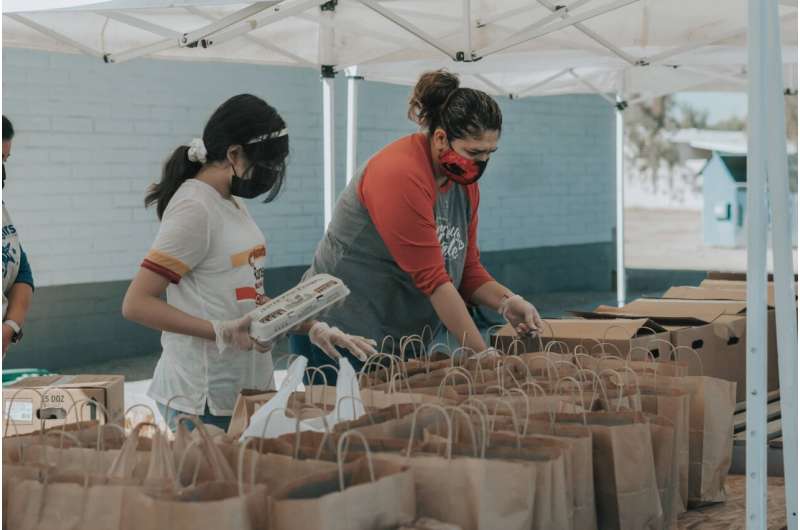
It takes more than a health care provider’s referral to get a person experiencing food insecurity to use a foodbank for the first time, according to a new study from The Ohio State University College of Medicine published in the Journal of the American Board of Family Medicine.
Researchers found patients who participate in clinic-based food referral programs are more likely to use a foodbank if they have visited one in the past.
“Clinic-based food referral programs are intended to encourage and support healthy eating for food-insecure patients who have health conditions that are impacted by poor diet, but there’s limited evidence to show how often these services are used,” said Daniel Walker, researcher and assistant professor of family medicine at The Ohio State University College of Medicine. “Our study aims to fill the knowledge gap and establish a framework to determine why some patients aren’t taking advantage of the health benefit.”
The Ohio State University Wexner Medical Center is a member of the Mid-Ohio Farmacy, a partnership between a regional foodbank and local health care providers that refers patients who experience food insecurity to a network of food pantries. In a retrospective study, researchers used data from September 2019—November 2020 from two Ohio State Wexner Medical Center family medicine clinics that offered food referrals to patients. Those age 18 and older, who screened positive for food insecurity and had an eligible chronic disease such as diabetes, high blood pressure or obesity, were referred to the program. Patients in the program receive an RxID to use at participating food pantries, which tracks the frequency of visits and the type of food received. The patients are eligible to receive produce once a week, four times the amount typically allowed for income-eligible visitors to a food pantry.
During this time period, 339 patients were referred to the Mid-Ohio Farmacy and 322 agreed to participate in the program. Of the active participants, 51% visited a food pantry at least once. These patients were more likely to be older, have diabetes and have visited a food pantry before receiving the clinical referral. Patients that had visited a food pantry before their referral had more visits in total and more produce-specific visits.
Participants who hadn’t used foodbanks in the past had a lower number of visits, a higher number of days between the referral and first visit, and a greater distance traveled to the food pantry. Patients with uncontrolled high blood pressure were less likely to visit a food pantry following their referral.
“We focused our study in a large metropolitan area of Ohio where an estimated 16–32% of residents are food insecure,” said Dr. Aaron Clark, researcher, family medicine physician at the Ohio State Wexner Medical Center and medical director of the Ohio State Health Accountable Care Organization. “Our team was pleased to see that patients are going to foodbanks to get nutritious food items like produce that contribute to a health-promoting diet, but more work is needed to ensure patients who are new to food pantries use them.”
Patients are screened for food insecurity, which is the inability to afford and access nutritionally adequate food consistently, by answering two questions that are part of the United States Department of Agriculture Economic Research Service screening module:
A response of sometimes true or often true to either question is considered evidence of the risk of food insecurity. Researchers may add one additional question to flag first time users for additional education or to connect them to resources such as transportation and text or patient portal reminders to visit a foodbank.
Source: Read Full Article